Fighting Final Fantasy V - Part 1: Bring Back The Job System To Final Fantasy! YOU COWARDS!
By ZombiePie 24 Comments
Part 1: It's Time For A History Lesson
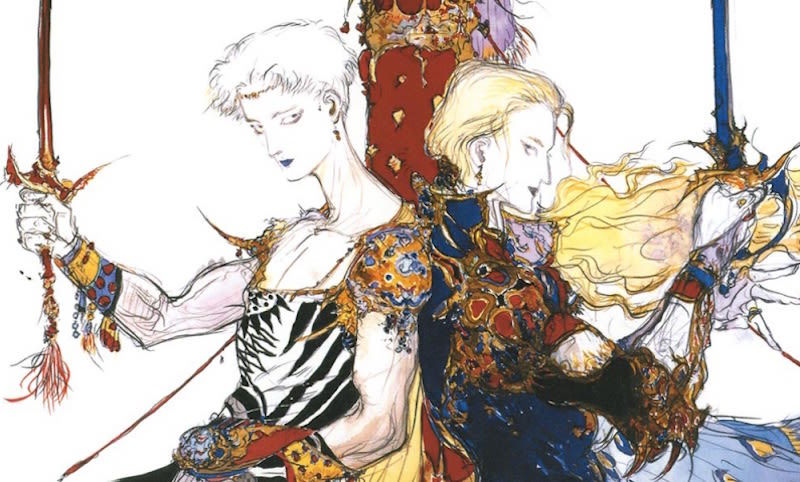
Part of what I enjoy most of all when it comes to my Final Fantasy series is when a user mentions learning about a game they'd never played before. While this blog series started as a joke, it has, more or less, become a historical research project on the ebbs and flows of Square-Enix as a developer. This time around, we will be looking at Final Fantasy V, a game that, for a variety of reasons, never released in North America until 1999. To add insult to injury, Europe would have to wait an extra three years. For those counting, that is seven to ten years after its initial launch on the Super Famicom in 1992. More gamers, however, were introduced to Final Fantasy V with its GameBoy Advance release in 2006. I say all of this because I consider Final Fantasy V one of the best JRPGs you've possibly never played.
There's a lot in Final Fantasy V that speaks to an era of Squaresoft we often forget about today. The company's reputation for being a technological trailblazer became an industry-wide accepted truth with the release of Final Fantasy VI and VII. Still, they were ahead of their time far earlier than that both mechanically and technologically. Unfortunately, the game that gets the most lip-service of the early SNES games is Final Fantasy IV. While I do not want to detract from that game's legacy, Final Fantasy V still deserves its share of credit for putting Squaresoft on a pathway to "world domination." The franchise's use of jobs, schools of magic, narrative reliance on crystals, and brisk pacing owe A LOT to Final Fantasy V.
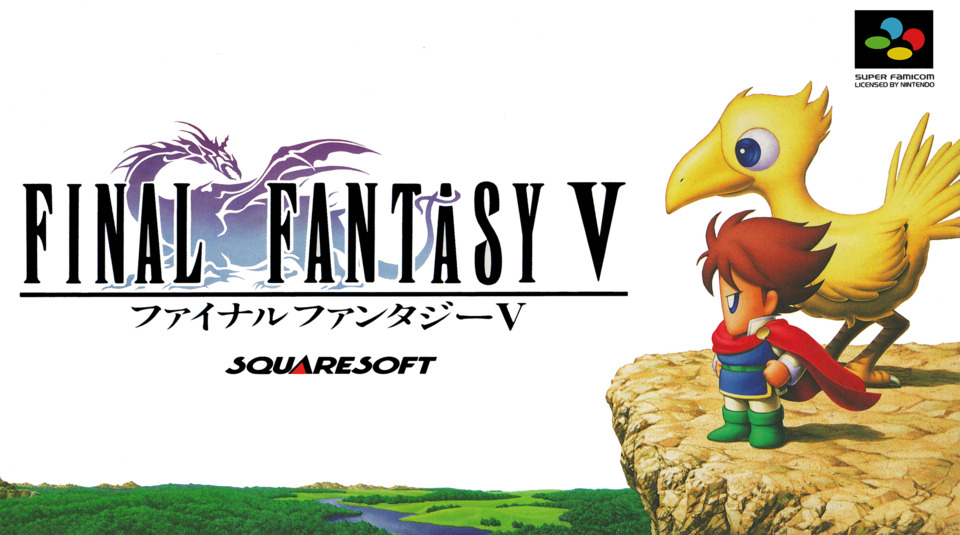
This topic inevitably leads us to the issue of why Final Fantasy V originally never came out in North America and Europe. The first ding against the game involves Final Fantasy II and III not being localized. Final Fantasy V is better than both of those games by a country mile, but it harbors one commonality with them: it is a mechanics driven JRPG rather than a story-driven one. At the time of Final Fantasy V's release in Japan, most Japanese game studios maintained a self-perceived notion that the Western audience did not understand and appreciate complex and mechanically driven JRPGs. The financial failure of Dragon Quest III and IV in North America was perpetually cited as an example of this back in the day.
I know what many of you are thinking, Final Fantasy IV, which first came out in the West and Europe as Final Fantasy II, was a massive success for Square. Regrettably, that game's popularity did not do much to shake Squaresoft of its belittling view of non-Japanese markets. Final Fantasy IV was a more narrative-driven game with a simplified job system, whereas Final Fantasy V was the opposite. Additionally, there's the daunting task that localization posed. Final Fantasy V has far more text and dialogue to translate than Final Fantasy IV. Finally, Squaresoft was in an awkward position as a publisher by the time Final Fantasy V was ready for a Western launch. While Final Fantasy V could have come out in North America in 1993, by then, Square had already begun work on localizing Final Fantasy VI. If they had released Final Fantasy V in North America during that time, the refractory period between it and VI would have been a scant four to five months. Therefore, the game's well-deserved moment of glory was shit-canned.
Part 2: My Quest To Maximize My Pain
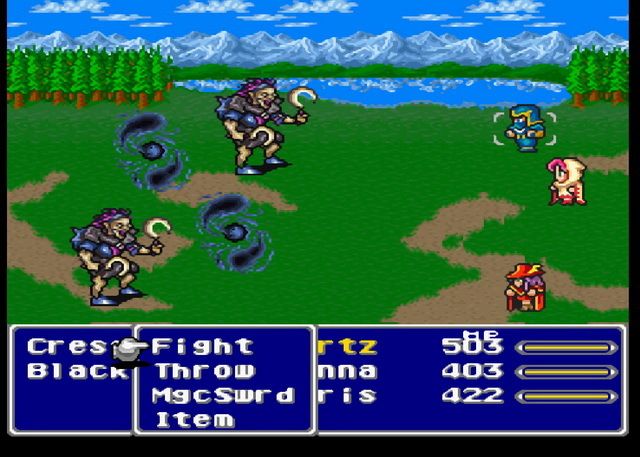
Before we continue, I want to make it abundantly clear I think everyone reading this blog should give Final Fantasy V a try. The game represents a free-loving Squaresoft that was absolutely on their "A-Game." Even so, we need to have a frank conversation about which version of Final Fantasy V I think you should play. Those of you with a proclivity for emulators or single-board computers, such as the Raspberry Pi, can play the Super Famicom version of the game. If I had to do things over again, that's the route I would have gone because I cannot stop myself from swooning over Mode 7 cutscenes and classic 16-bit graphics. Just be aware, which localization of that release you pick is incredibly essential. If you want my advice, the GBA/iOS translation does an excellent job of interpreting the game's light-hearted tone without any unneeded awkwardness. Although, if you want a more "literal" interpretation of the source material, then you are going to have to resort to fan translations.
For those of you who want to play the PlayStation One port, be warned, things are a bit murky. To this day, I do not understand for the life of me why the "PSOne Classics" program from the PS3 never fully translated to the PS4. As a result, the PlayStation Store copy of Final Fantasy V is only compatible with the PS3, PS Vita, and OG PSP. Regardless, this version is "weird" for a handful of reasons. For one thing, and this is something WE WILL TALK ABOUT SEPERATELY, the PlayStation One version has a notorious translation, and I'm not just talking about simple grammar and spelling mistakes! Lastly, the combat in the PlayStation One version has a handful of bugs and glitches which break the game sideways. Admittedly, Final Fantasy V is far from being "balanced," but with the PlayStation One port, you can stun-lock bosses ad infinitum as well as duplicate items to your heart's content.
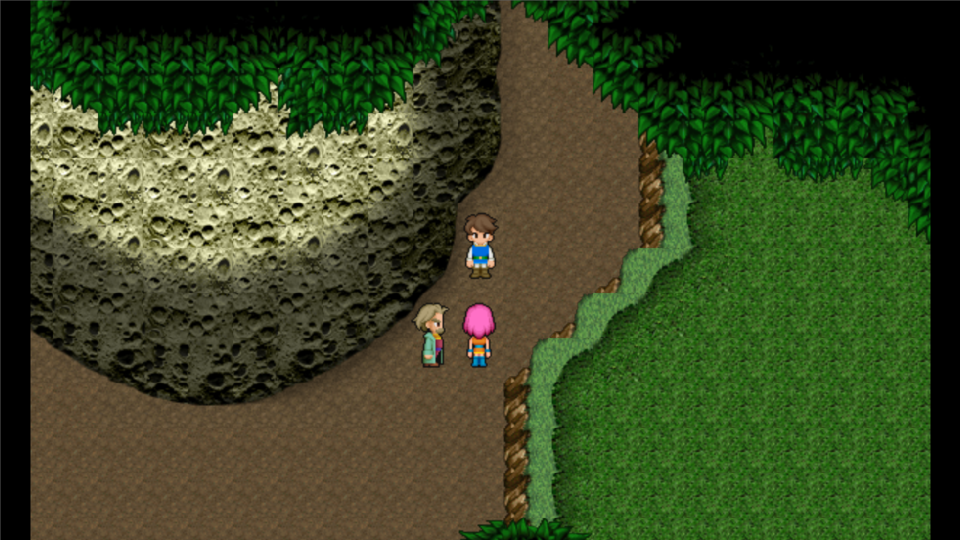
As my modus operandi happens to involve maximizing my pain, I played the iOS/Steam port. Before everyone takes turns making fun of my poor life-choices, I want to say a few positive things about this version. First, I love the new character portraits that display during dialogue scenes. Full disclosure, I've never been a fan of Yoshitaka Amano's whispy and abstract character art, and these portraits do a better job of visualizing Final Fantasy V's breezy and free-spirited tone. Second, this version includes the bonus dungeon and four extra job classes from the Game Boy Advance release, but with the added benefit of having vastly superior audio. The caveat to all of this, and it is a massive caveat, is you have to play a game that looks like it ran through six or seven emulator filters.
To add insult to injury, if you want to play the game on PC, you are limited to an incredibly questionable Steam download. I say "questionable" because it is a slap-dash port of the mobile game. Worse, this version is one of the few games on Steam that does not support the Steam Overlay. Consequently, if you enjoy streaming your Steam games, then be aware, you have to EDIT its executable and MANUALLY ADD OpenGL to its folder. I shit you not! Yet again, Square-Enix continues to drop the fucking ball when it comes to making its classic games legally available on the PC. And why they refuse to make the original Super Famicom version available to markets that never got access to it, blows my goddamn mind. Every single time they have an opportunity to make one of their "classic" games accessible on current-generation technology they have to tinker with it and make it worse.
Part 3: Why The Localization Of Final Fantasy V Matters And The Oft Forgotten Legacy Of Ted Woolsey
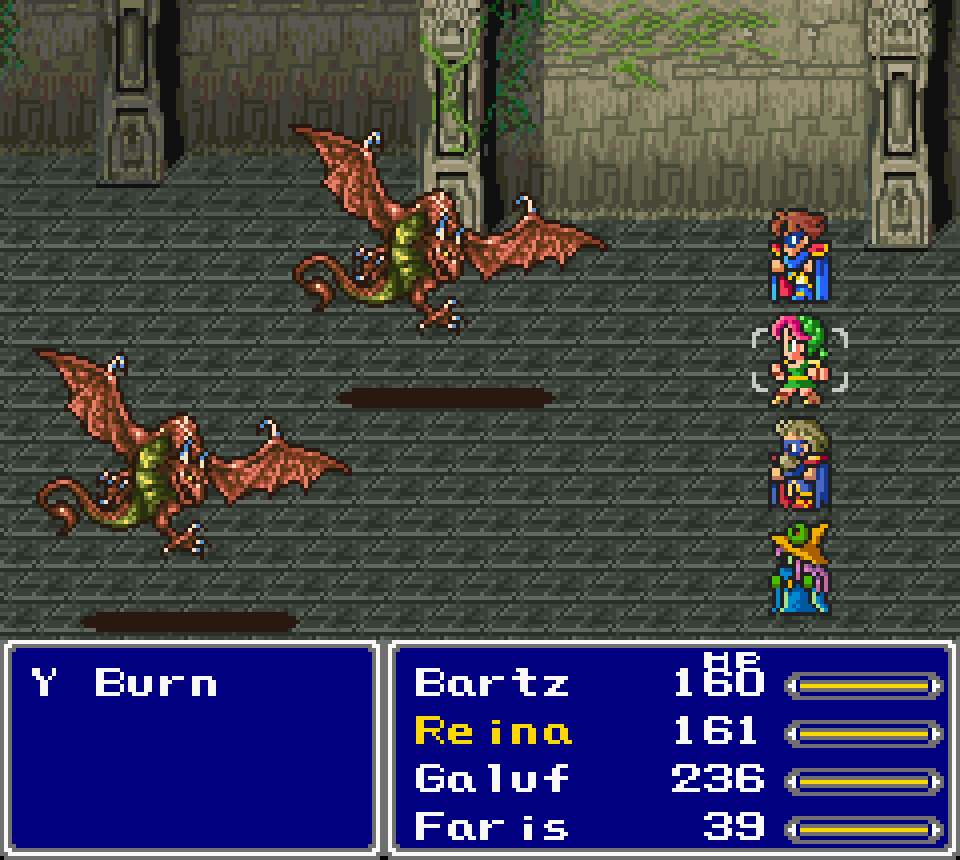
Depending on where you live, Final Fantasy V either released before or after the launch of Final Fantasy VI in North America. If you are reading this blog, then there's a good chance you fall into the latter of those two categories. This is a critical point of contention, as Squaresoft's approach to localization changes depending on how close your version of Final Fantasy V is to the North American launch of Final Fantasy VI. With that in mind, it's time for us to have a frank discussion about Ted Woolsey and his impact on modern localization. Initially, I thought I'd have this discussion during my inevitable series on Final Fantasy VI, but either way, I'm glad to have it here as well.
Without a doubt, Ted Woolsey is one of the most important figures behind the Final Fantasy franchise's worldwide success. Unfortunately, most "modern" Square-Enix fans do not know the man even exists. For those unaware, Woolsey was in charge of Squaresoft's English localization department from 1991 to 1996. And when I say he was "in charge of the department," I mean he meticulously transcribed every game he was working on with a fine-tooth comb. The man's credits honestly speak for themself, and he's widely considered one of the reasons why Squaresoft experienced as much success in Western markets as they did during the SNES-era. Be that as it may, he's not without his share of critics. Many contend that his approach of modifying scripts to appeal to Western audiences constitutes censorship and purging the source's Japanese identity.
Admittedly, this conversation is a better fit for my Final Fantasy VI series. Still, it is something we need to discuss because there are TWO different official translations of Final Fantasy V, and one of them is downright dreadful! Both of these translations, however, took the Woolsey approach to localization, which is to suggest they took liberties with the original script for the sake of increasing the game's potential audience. The first of these is the PlayStation One translation, which, as I suggested earlier, should be avoided like the Bubonic Plague. The game reads like a fourth-grader in a Japanese dual-immersion program having a go at translating their first video game. Seriously, the enemy names are ATROCIOUSLY localized! Here are a handful of examples I noticed while watching a Let's Play series on the PS1 port. On the left, you'll see the "canonical" English translation, and to the right, you'll find the PS1 translation:
Mani Wizard -> Money Mage
Dechirer -> Bald Money
Sucker -> Soccer (It's an octopus)
Tonberry -> Dinglberry (I did not mistype this one!)
Princess Sarisa -> Princess Salsa
Wyvern -> Y Burn (I shit you not!)
Then we have the GBA translation, which I maintain is a perfect example of Woolsey-era localization done right! This localization effort completely avoids the grammatical errors of its predecessor, while keeping the spirit of Ted Woolsey's philosophy: diverge from the script when necessary and honor the spirit of the source at all costs. With the GBA translation, the characters are much more light-hearted than their Super Famicom counterparts. They are more likely to joke with one another and play off each other's character tropes than in the Japanese version. This approach works in large part because Final Fantasy V's story is not up to today's standard of a game bearing its namesake. As we will discuss shortly, Final Fantasy V's story feels like an attempt at making an homage to the works of Akira Toriyama, rather than a wholly original idea swimming around Square's offices.
If, however, you are the type of person who takes localization so seriously you send paid translators DMs questioning why they didn't translate the source material literally, then, relax, there's a fan translation that does precisely that. Just be aware, I think you are going to have less fun with the game if you go this route. Look, I'm trying my best to avoid the "literal vs. figurative" debate when it comes to localizing non-English video games and anime. No matter, the GBA translation makes the characters feel more grounded in the world which surrounds them. They goof around a lot because the world they envelop is ridiculous. For example, in a literal translation, the character of Galuf is a blunt and irreverent father-figure. In the GBA translation, Galuf is a hilarious homage to "The Dude" from The Big Lebowski. I know some of you might find that off-putting, but be aware, his character more appropriately fits the game's tone that way.
Part 4: Remember When Final Fantasy Games Were Fun Adventures?
I spend this time discussing Final Fantasy V's localization as a preamble to its story. The game is, without a doubt, one of the funniest and most light-hearted adventures Square has ever conceived. Yes, there's a world-ending threat you need to defeat before the game's conclusion. Still, Final Fantasy V lacks the pretensions of melodrama that have come to define virtually every game in the franchise since Final Fantasy VI. No matter, there's something about its lack of grandeur I find refreshing. Admittedly, Square shooting for the stars has produced some iconic moments like Final Fantasy VI's introduction as well as Final Fantasy X's ending. But their lack of discipline has created more than a handful of groan-inducing moments like Final Fantasy VIII's "Orphanage Scene," and everything that is Final Fantasy XIII.
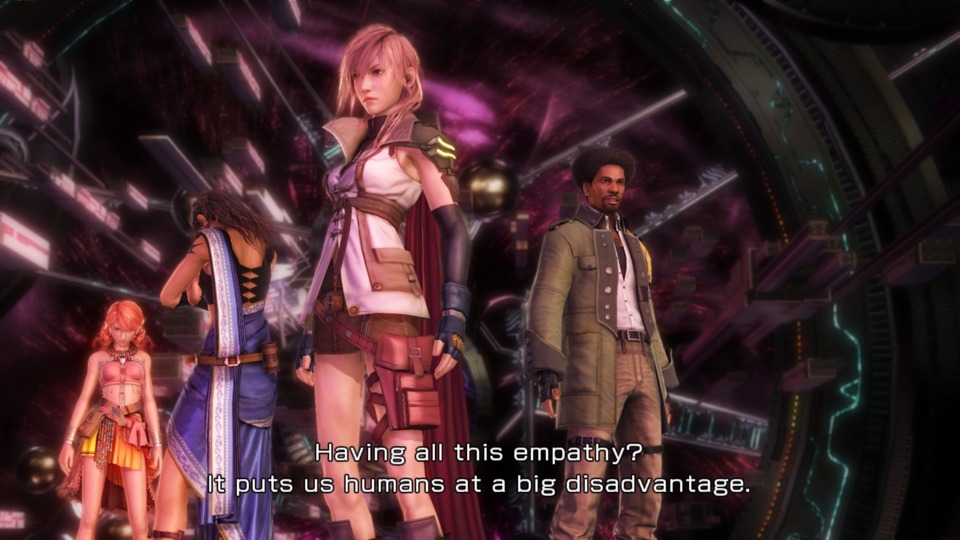
Final Fantasy V lacks the storytelling highs of its eventual successors, but it also avoids many of the franchise's pitfalls. To underscore this point, let's look at how the game starts. Right off the bat, you control a strapping young lad named "Bartz Klauser" or "Butz" in the Japanese version. As he is traveling the world with his Chocobo companion, Boko, a meteor strikes the planet, and they set off to investigate the impact site. As Bartz enters a wooded area, he encounters a female explorer who is assailed by goblins. After rescuing her from a grisly demise, she introduces herself as "Lenna" and admits to wanting to see the meteor as well. Upon reaching the interstellar object, Bartz finds an unconscious man who seems to have forgotten everything except his name, which is Galuf. Shortly after that, Lenna announces she will be visiting the nearby "Wind Shrine" and offers to take Bartz there, but he refuses.
Everything I've described above takes place in about ten minutes, and while it doesn't sound like much, it's the little details that go the distance. In these scant few minutes, we know who the characters are, their driving motivations, as well as their characteristics and quirks. Bartz is a kind-hearted but introverted adventurer who prefers doing things alone; Lenna is a righteous but naive princess; Galuf is a crass but steady elder statesman. More importantly, the game's pace starts at eleven and never looks back! Shortly after Bartz leaves Lenna and Galuf, Boko acts as his conscience and forces him to return to them. When he does, the trio finds themselves in a pirate hideout and, as a group, attempt to steal a galleon! If that doesn't sound like a fun adventure to you, then I don't know what to say.
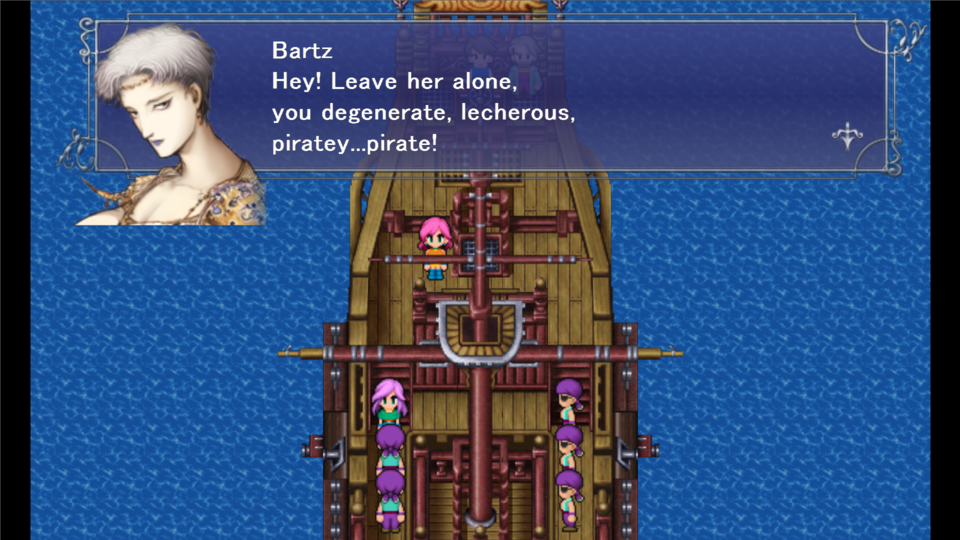
Yes, this is a boilerplate enterprise guided by MacGuffins, which, this being a classic Final Fantasy game, means you are assembling a collection of elemental crystals. Admittedly, I have a reputation for giving Final Fantasy games a hard time for relying too heavily on MacGuffins. In Final Fantasy V's case, I'm going to give the game a pass. For one thing, Final Fantasy V makes no pretense about being a heady melodrama and is more interested in providing compelling character moments and impactful one-off vignettes. And you know what? Final Fantasy V provides an excellent narrative from a moment-to-moment perspective. More importantly, Final Fantasy V has an exceptional gauge of when to hit the "pause button" on its combat so you can better appreciate your surroundings. Do you remember that pirate den I mentioned earlier? The design team placed all of the NPCs to be facing away from you, so your first "stealth mission" goes down without a hitch!
Part 5: It's All About Jobs, Except When It's Not
We should now jump into what makes Final Fantasy V an extraordinary video game: its job system. If you decide to play Final Fantasy V, you'll immediately notice how it is a time-capsule of the but-end of Squaresoft's Dungeons & Dragons roots. For those uninitiated, from Final Fantasy I through III, the series more or less plagiarized Dungeons & Dragons 2nd Edition with its gameplay mechanics and enemy design, but this is a topic I covered during my Final Fantasy I and II series. The name of the game here is jobs and progressing your characters down a skill tree as you would in Dungeons & Dragons. The choices the game provides are overwhelming, but the good news is that Final Fantasy V doesn't demand a lot out of its audience. Should you find a winning combination of jobs, there's no pressure in the game to leave your comfort zone.
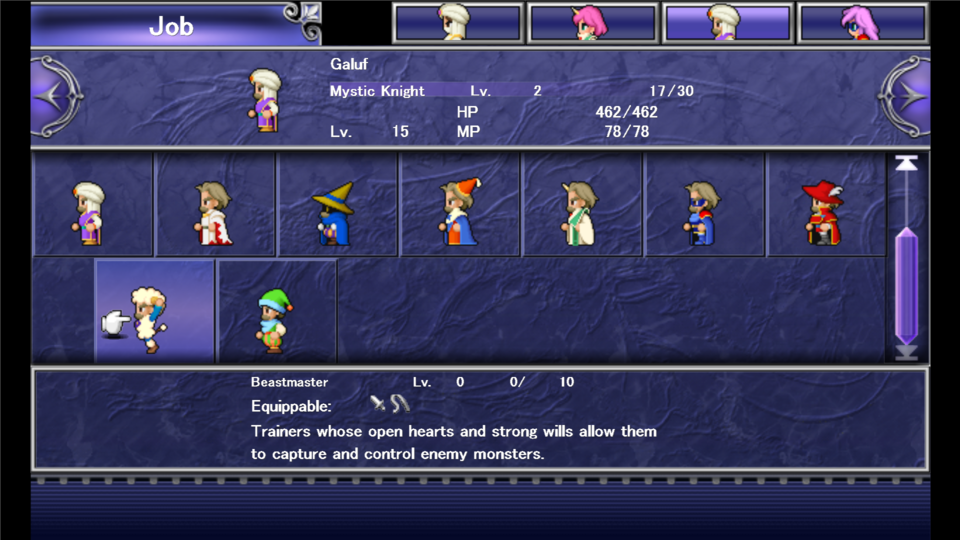
I want to spend some time on that last point. As a CRPG player by trade, it was a breath of fresh air to play an RPG with a dynamic job system that avoids penalizing you for changing your character's assignments on the fly. In fact, with the breadth of options Final Fantasy V provides, a harsh re-spec option would've been antithetical of everything the game aims for with its mechanics. Final Fantasy V is all about having a fun time with a myriad of job classes and seeing said classes out for as much or little as you want! Each class starts with an "active" ability, which provides a new option in the menu system during a battle. To highlight, a Thief gains the ability to "Steal," and a White Mage can cast healing magic. Where things get interesting is the game's use of passive buffs and secondary skills. To gain access to even more options in combat, you'll need to level up specific jobs to utilize some of their more potent abilities. But, the hybridization of jobs is the bread-and-butter of Final Fantasy V's gameplay. In Final Fantasy V, every character is capable of "equipping" one ability mastered from any of their jobs, regardless of their present assignment. With this mechanic, you can make balanced damage dealers or hyper-specialized fiddler craps. For example, I LOVED giving my mages the secondary abilities of Monks so they could beat up everything that stood before when they ran low on MP.
Those secondary abilities are the primary reason why I love Final Fantasy V. They add a whole new layer to the game as they foster an organic sense of mechanical exploration. Some job combinations go hand in hand, whereas others require a thorough investigation. The game doesn't provide you with any "winning combinations" from the onset, but because the game's stakes are so low for the first three acts, it doesn't punish you for hot-swapping job pairings for hours upon end. Better yet, and this is a point I'll address later, every level in the game is in service of two or three particular jobs, but that is not to suggest those specific jobs are the only solution. Often, the enemies in an environment have one explicit weakness only a few classes can take advantage of in combat. Despite that, if you want to run a party of all mages or "sword and board" types, you can do that as well.
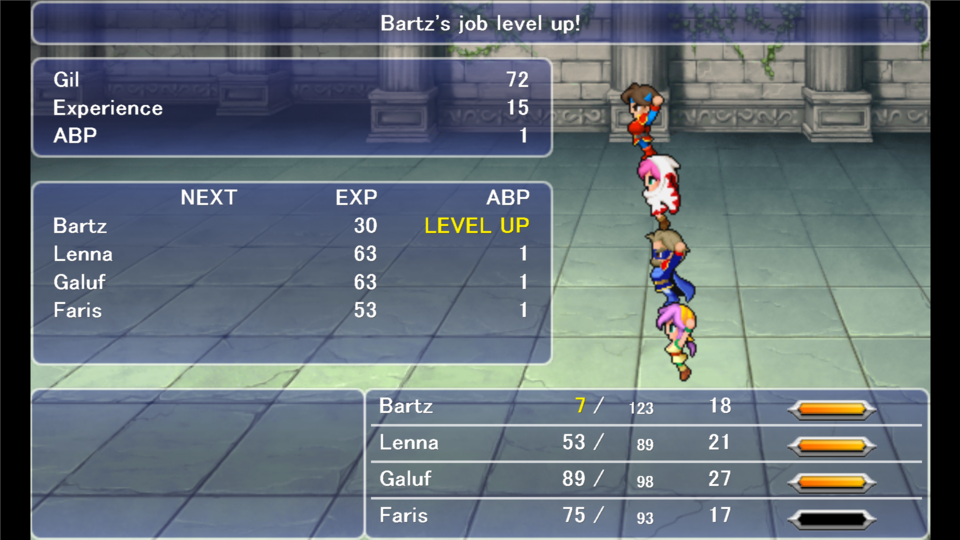
If there is something that annoyed me endlessly, it's that the game takes its sweet-ass time to dole out some of its jobs. Your initial bevy of classes dispenses AFTER you summit the Wind Shrine. By then, you've already trekked across multiple dungeons and dealt with several boss encounters. That in and of itself isn't a huge issue except that the game feels bare without its job mechanic in full swing. Another nitpick is that maximizing the utility of these jobs isn't immediately apparent to the player within the game. Sure, one can assume classes like the Knight or Thief benefit from specific suits of armor or weapons. The same sentiment applies to the more straightforward magic-based classes like the Black Mage, White Mage, and Red Mage. Nevertheless, there are a lot of hybrid jobs where it's not obvious how you go about making them more powerful. To illustrate, it wasn't until AFTER I consulted a guide that I realized I had missed out on nearly half the summons for the Summoner because they were locked behind side quests.
Curiously, the most significant mark against Final Fantasy V's mechanics is also, at least in my opinion, its biggest draw. And that draw or flaw, depending on your perspective, is that Final Fantasy V's job system is UTTERLY BROKEN! Now, when I say "broken," I don't mean Final Fantasy V's endgame loses all semblance of difficulty, and the last boss is a joke. No, when I say "broken," I mean the entire game becomes a cakewalk by the time you get your second batch of jobs. Because your classes cover a breadth of elements and specialties, and you can swap jobs on the fly without penalty, everything remains "on the table" at all times. That means if a boss has a specific elemental weakness, the only thing stopping you from stun locking it into oblivion is your ability to identify that weakness. No joke, I was able to beat some of the mainline bosses within two to three turns because of exploits! For fuck's sake, the game gives you "Lv. 5 Death" within its first act, and there are at least a half dozen bosses that have their levels set to a number divisible by five!
Part 6: Charm Does Not Equal Storytelling, But It Doesn't Hurt
A common complaint levied against Final Fantasy V stems from its characters and the fact they stand true to their trope-laden nature until the very end. This point is mostly valid, as, outside of a handful of character moments, the primary cast repeatedly makes light of their increasingly ridiculous circumstances. Even when you encounter Exdeath, Galuf still sees fit to crack a crass joke, and Bartz a witty retort only he finds funny. In a lot of ways, Final Fantasy V maintains the tone of a Saturday morning cartoon wherein the characters remain their archetypes from start to finish and rarely show signs of maturation. Consequently, the result is that Final Fantasy V feels distinctly Japanese as it sincerely borrows the storytelling template of a serialized shonen manga. And much like those sources of entertainment, Final Fantasy V is downright fun to watch.
Furthermore, Final Fantasy V accomplishes a lot with its limited resources. Regardless of the version you play, the game utilizes Mode 7 camera angles and cutscenes, which do a lot to establish the greater world and your party's sense of place. Moreover, the character animations, while rudimentary and overly comical, make these characters far more expressive than what you'd expect out of a game made in 1992. Altogether, the character animations, as well as the game's overall direction, reminded me of a Kabuki theater. Very often, the characters march to the center of the screen, then turn to face the player and then expressively share their two cents' worth as if they are acting on a stage. Then, when the characters have finished speaking, the camera will pan down and juxtapose to a different location or set-piece. All the while, the characters will jump for joy, tilt their heads, cry tears, or hug each other while the music swoons in the background. Despite its advancing age, I felt more emotionally invested in Final Fantasy V's first three hours than the entirety of Final Fantasy XIII!
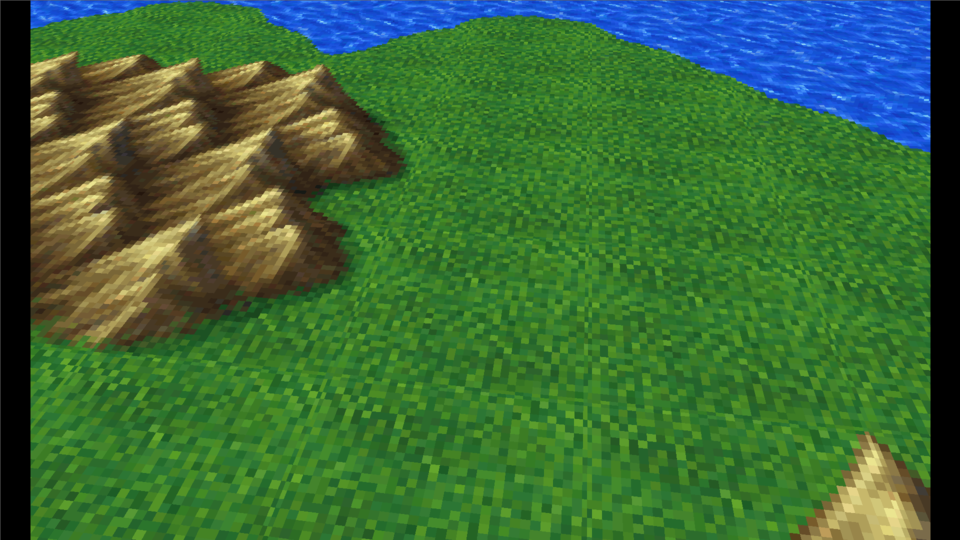
Final Fantasy V also ensures that its NPCs feel like an organic extension of their surroundings. Every time you enter a new castle or town, you'll pick up on linguistic differences as well as cultural shifts between the major continents. Sadly, Final Fantasy V doesn't use any of this worldbuilding to further a big picture message or theme. Instead, it uses its environments and NPC interactions to inject added humor and camp. For example, when the player first enters the town of Tule, they'll witness Faris' merry band of pirates storming the village whilst chanting "GROG! GROG! GROG!" When you finally enter the pub, you'll find it disheveled and stripped bare of useful items. Likewise, if you attempt to play the piano there, a local dancer gives your player character a lap dance.
There's also something to be said about the game's environmental design. The levels each are iconic in their own right, and all of the towns and castles feature character interactions that feel rewarding. The vast majority of these boil down to praises of your recent adventuring exploits, but many fill out the world in a reasonably well-done manner. Later in the game, there's a town populated by wolf-people. When you interact with the citizens of this town, you discover they have their own greetings and social customs. Its little touches like those which lend to there being a "wholeness" to Final Fantasy V's world despite the fact it's by and large Squaresoft pulling from their playbook. Yes, there's an elongated desert level wherein you get attacked by a sandworm. Yes, there's a lava level full of Cthulhu-like demons. Yes, there's a mountain level that pits you against a giant dragon. Despite all of that, each environment feels like it has a functioning ecosystem and stories to tell.
By the way, I do not wish to suggest Final Fantasy V is a breezy adventure lacking a sense of "stakes." In reality, Final Fantasy V's punchier moments hit you right off the bat. For one thing, our heroes FAIL at their attempt to protect the Wind Crystal within the first three hours. Shortly after that, Faris' childhood pet, Syldra, dies while protecting the party from a massive whirlpool. Bartz even has a brief character moment wherein we discover he's an orphan whose mother died of an unknown illness right before his eyes. None of these headier scenes amount to anything longstanding in terms of changing the story's tone. Nonetheless, they provide enough storytelling hooks to allow you to look over the fact Exdeath, the game's antagonist, is a non-factor for a whole ten to fifteen hours. Speaking of which, the lack of a visible antagonist, for such a significant amount of time, is one of the few storytelling shortcomings of Final Fantasy V. Without a doubt, Final Fantasy games have a tradition of taking their sweet time to reveal their "true" villains. Still, until Exdeath's belated appearance, the story sticks with an unseen evil force far longer than it should.
Part 7: 16-Bit Level Design That Doesn't Make Me Want To Die!
If there is one slight quibble I have with Final Fantasy V's environments, it's that some of them overstay their welcome. Because the levels are often in service of providing you with opportunities to test out new character classes, the random encounter rate often jumps up without warning. I understand the intent is to give you added opportunities to get acclimated with new jobs. No matter, some of the dungeons have levels and floors on top of one another, and during the early game where your resources are scare, these dungeons lose sight of the game's relaxed appeal. Additionally, this game still exists in the era of Squaresoft, where you can piss straighter lines than the paths you walk. If you hate labyrinthine sewer sequences or forested nature walks where you snake around for upwards to half an hour, this game might not be your cup of tea.

I want to preface that Final Fantasy V's reliance on dungeons did not bother me, and I say that as someone who recently "survived" Final Fantasy II. For one thing, the puzzle-like nature of the game's levels ensures you have "easy outs" should you hit a snag. A notorious aspect of early JRPGs, the Final Fantasy series included, are mid-level death spirals. In a game like Final Fantasy I or II, you very often can find yourself stuck in the middle of a dungeon with no easy way to restore your party's HP or MP. The result involves replaying hours of mindless grinding due to "Game Over" moments coming out of nowhere. With Final Fantasy V, not only do you always feel in control of the tone of the battles, but the dungeons themselves very rarely pose a significant challenge. The reason for that is many of the early levels feel tailor-made for specific job assignments.
One of the earliest examples of the deliberative nature of Final Fantasy V's level design comes in the form of the Ship Graveyard. Usually, Final Fantasy games would hesitate to subject the player to an environment populated by undead encounters as one of its first levels. However, in Final Fantasy V's case, doing so showcases the wonderfully liberating nature of the game's job system. All four of your starting jobs are equally viable in handling this otherwise untenable environment. Knights deal single-target wiping attacks; Monks sport area-of-effect physical maneuvers; White Mages can use their curative spells to KO enemies; even a Thief can throw restorative items to cause massive damage! The list goes on, and the game plays to this strength by not discouraging you from populating your party with whatever you please.
All of this talk is to suggest I did not abhor the emphasis on grinding in Final Fantasy V as much as I have in previous Final Fantasy games. Trash mobs are easy to manage as long as you have a good grip on your present environment. Enemies in a forest are likely to have an elemental weakness to fire-based attacks, whereas aquatic creatures are bound to be weak to lightning. That said, you're going to be playing a lot of this game if you want to get the highest of highs from the job system. If there's one annoyance I want to mention, it is the early game being way too stingy on experience points that level up your classes. Even battles against armies of trash mobs are only bound to reward you with a couple of points (i.e., ABP). When you consider each class needs to be leveled individually, the lack of early ABP grind spots makes the first handful of chapters a bit of a slog. It is during those initial moments when the game throws all of its mechanics at you, albeit, without enough of the job system's upsides.
Inevitably we need to have a brief conversation about equipment. Treasure chests litter every corner of Final Fantasy V's levels. Virtually every conceivable dead-end and crevice rewards the player with an item or trinket. I'm of two minds when it comes to the game's limitless equipment system. On the one hand, the game rewards player exploration and the completion of side quests handsomely. On the other hand, there's a ton of shit to get, and the game does a terrible job of communicating if you've missed equipment essential to your job classes. The worst offenders are the weapons and armor sets only obtainable by using the "Steal" command on bosses. It wasn't until AFTER I completed the game that I discovered my late-game struggles with the Ninja class were due to me not getting the complete "Genji Armor" set.
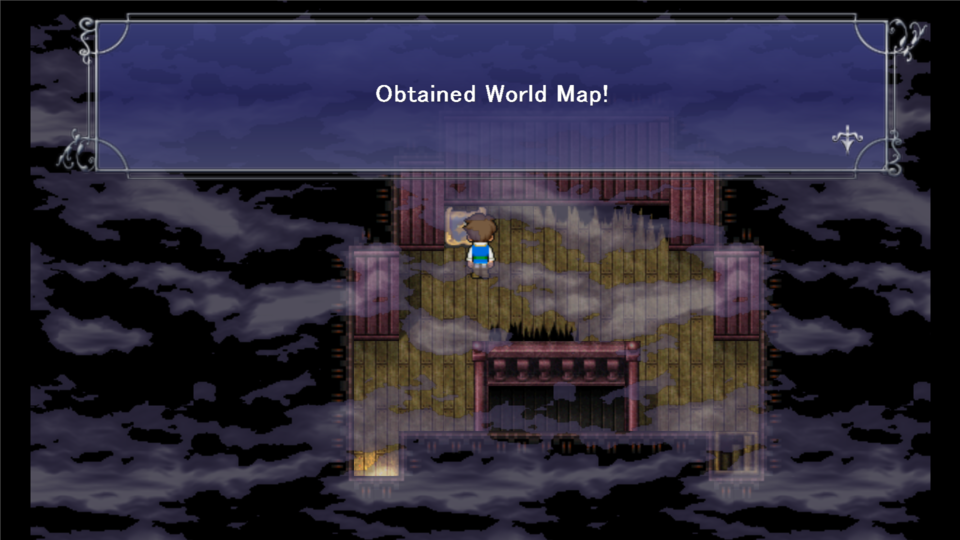
Part 8: Now It's Time For ZP To Nitpick A "Good" Final Fantasy Game!
I suspect some of you might be surprised to see me glowingly review the mechanics of a Final Fantasy game for once. Trust me; I'm as amazed as you are right now! That said, there are a handful of annoyances that I want to mention about Final Fantasy V's job system. First, being able to track the progress of your active jobs is a pain in the ass. If you want to have an idea of which upcoming abilities you are about to unlock, you have to open up the game's manual and flip through a bunch of cluttered codex entries. Similarly, the UI does a terrible job of giving you an idea of which character stats are more strongly associated with each corresponding job.
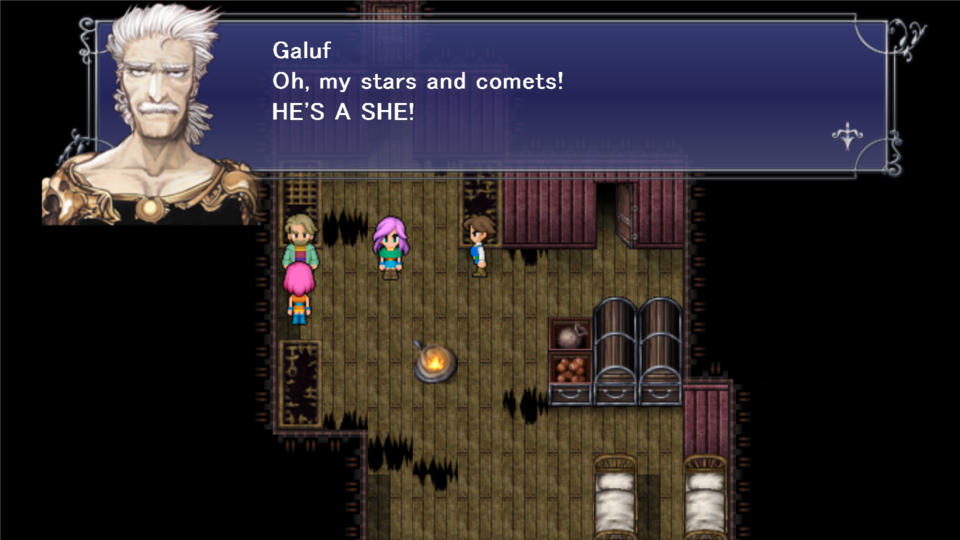
Admittedly, if you have played the previous games, you should know simple things like the "Magic" stat corresponding to the overall strength of curative spells and black magic. Even so, there are dozens of "hybrid" classes that blur the lines between your usual "sword and board" and magically-minded classes. That's doubly so with the hyper-specialized jobs like the Time Mage, Geomancer, Dancer, or Bard, which play nothing like the more straightforward options in the game. On top of that, the progression of these jobs is all over the place. Several are immediately useful to you and lose their utility as you progress the game, and others are the inverse. Additionally, there's no rhyme or reason to how many points it takes to "master" each job. I spent half of my playthrough trying to get one of my characters to acquire the final "Dual Cast" ability of the Red Mage job. By the time I accomplished this feat, one of my other characters completely master TWO of the game's starting classes.
But what drove me batty most of all was Final Fantasy V's insistence that virtually every job only gets ONE ability slot. With the innumerable choices the game provides you, this limitation is arbitrary and needlessly frustrating. I desperately wanted the game to give me more ability slots so I could better blend the various classes. Worse, the player is NOT able to change the starting command on any of their jobs. To clarify, each class in the game adds an extra input to your menu system during a battle which is often an essential ability that differentiates that job from your other choices. Unfortunately, that default ability is static, and with some roles, you end up using your secondary slot on the same job. For example, the Chemist's default in-game ability is "Drink," but the skill you want to have on hand is "Mix." Unless you've already unlocked the "Mix" ability by leveling up the Chemist job, your stuck with a Chemist "doubling up" on its own ability slots.
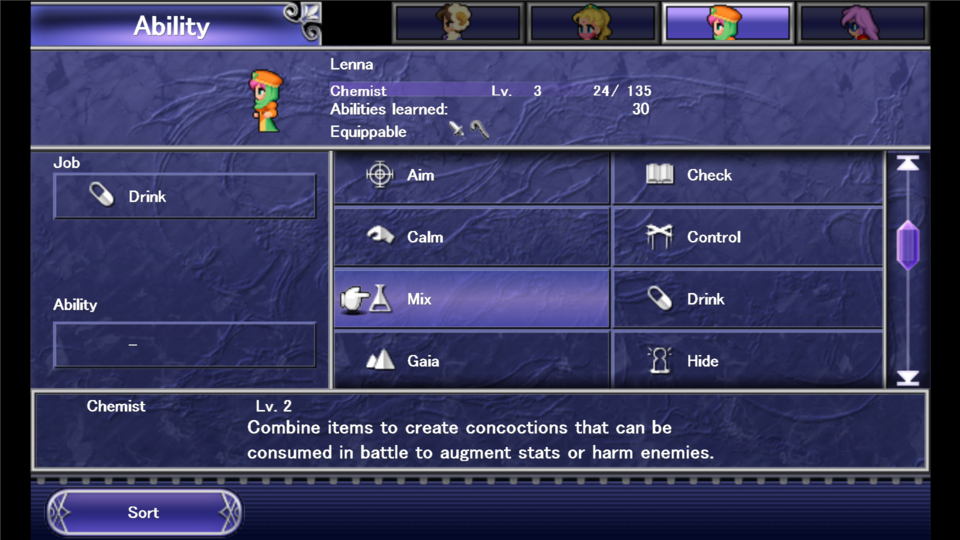
Likewise, there are a few elements about Final Fantasy V's story that did not "work" for me. For one thing, the early sub-plot of Faris being a male is off-putting and dated. Without a doubt, the game attempts to frame Faris' cross-dressing as her attempt to blend into a male-dominated profession, but it's played in-game with all the tact of an episode of Tenchi Muyo. Also, I was not impressed by the TWO gay panic scenes wherein Galuf and Bartz questioned their heterosexual orientations upon meeting, and even peeping on, Faris. Finally, the game spends WAY TOO MUCH TIME foreshadowing Faris being Lenna's long-lost sister when you can predict that revelation a mile away. And yet, the story stretches this plot point for the better part of TWO GODDAMN ACTS!
Lastly, while I was certainly impressed by the diversity of jobs in the game, not all of the classes are created equal. At no point did I enjoy playing as a Geomancer or Berserker. Furthermore, getting the additional abilities from the more "situational" classes necessitates a great deal of grinding, which ultimately culminated in a lot of "thank you, fuck you, bye" moments. I also want to say some of the secondary abilities are better than others. Alternatively, some of the passives provide quality-of-life additions that are utterly bizarre and better suited as a selectable option in the menu. To illustrate, the first passive you unlock on the Thief class is "Sprint," which allows you to run around the world at twice the speed and with half as many random encounters.
Part 9: Why I Think This Game Is "The Complete Package" For JRPG Fans
It is around the time when the first crystal shatters, that Final Fantasy V remembers it has a story. Faris, the character who dragged the rest of our motley crew to the Wind Shrine, is the first to discover all wind in the world has ceased. Then, Lenna announces to the rest of the party, that they must travel to the Water Temple and prevent its crystal from meeting a similar fate. Though the lack of wind would typically pose a barrier to traveling the world by ship, Faris reveals a sea monster named Syldra, is capable of pulling her sloop to where we need to go. To reach the shrine, the party cruises through a canal, but an enormous whirlpool befalls them. Syldra sacrifices itself to save the party, but the vortex destroys the ship and strands our characters nonetheless.
While the party clambers through the shipwreck, we discover Faris is a female, and there are several hints she is Lenna's sister. Speaking of Lenna, during one of her lectures about the importance of the four sacred crystals, she lets slip that she is the daughter of King Tycoon, whom we saw earlier trying to save the Wind Crystal. When Lenna complains about the heavy-handed nature of her father, Bartz muses she is "lucky" to have a father at all as his parents died when he was a child. Nevertheless, after they make their way to a nearby beachhead, everyone is graced with visions of long-lost relatives and friends. However, because Galuf has amnesia, he remains unaffected and wakes everyone else from their stupor. What ensues next is a battle against Siren, who might I add, attacks our party after a shipwreck. For once, a mythological figure mimics the myth it is based on in a Final Fantasy game. I never thought I would live to see the day.
Again, this is just one level, and yet, the story finds a way to serve each character in addition to the main story thread. Lenna and Faris are likely long-lost sisters; Bartz is an orphan and not well-adjusted to working with others; Galuf has amnesia but has a parental relationship with the rest of his party. This emphasis on character development continues even in the interstitial set pieces. For instance, after defeating Siren, the party overhears a rumor of a sickly wind drake that sounds a lot like Lenna's childhood pet. This wind drake serves as a story lynchpin as, due to the present lack of wind, there remains no other way of reaching the Water Temple. Even so, we discover, much like Farris' relationship with Syldra, Lenna considers this dragon to be an extension of her family. This plot arc culminates in her walking through a field of poisonous plants to save her animal companion. Another notable scene involves a mercenary throwing Faris off a cliff, and Faris climbing back up by her bare hands to fight them.
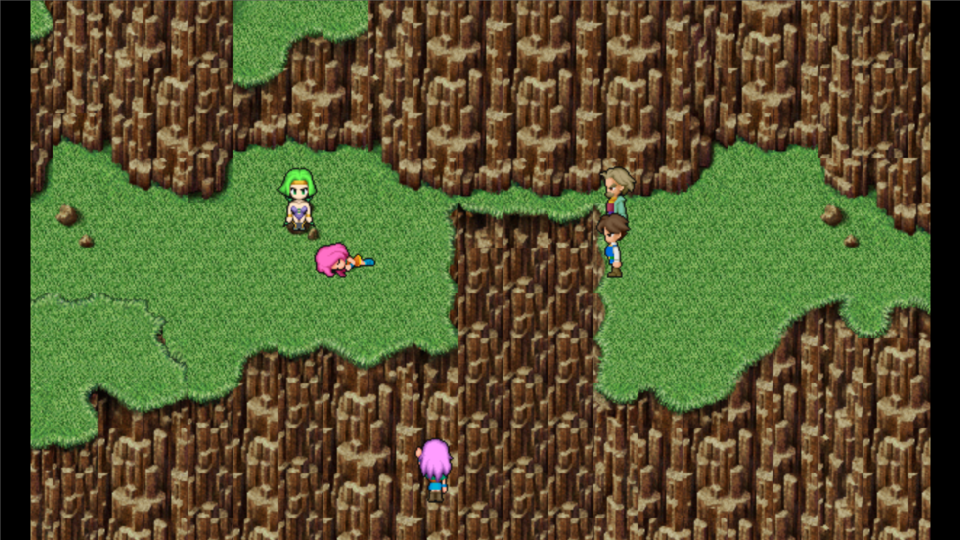
Furthermore, the game's impeccable worldbuilding kicks off around this point. If you talk to the people of Carwen, you discover the city of Walz is using machinery to exploit the power of the Water Crystal. Before the shattering of the Wind Crystal, the kingdom of Tycoon was doing something similar, and Lenna surmises the Water Crystal is likely moments away from breaking. It is interesting to note the initial villain of Final Fantasy V is not Exdeath, but human selfishness. In an alternate world, I'd like to see a Final Fantasy game stick with that concept from beginning to end. In truth, after Exdeath becomes the story's focal point, it loses sight of its previous criticism of the dangers of untapped industrialization. That is especially true when Professor Cid, the source of much of this machinery, comes into the picture and uses said societal-ending technology to un-fuck the world.
Finally, Final Fantasy V has a ton of optional cutscenes and story moments you can miss if you are not careful. Undoubtedly, Final Fantasy V might have the most character arcs and cutscenes hidden behind non-compulsory content I have ever seen in the series. For example, after you acquire Lenna's wind drake, if you make a beeline to the next temple, you'll miss out on a scene where Lenna confronts Faris and calls her "sister." The absolute worst example of this odd storytelling structure is when the game puts Bartz's entire character arc in an optional location that you can easily miss if you do not consult a guide. Not only that, but the environment is time-sensitive and "disappears" after a certain point in the story. No matter, using the wind drake, our band of misfits flies to Walz and warns the king of the Water Crystal's impending destruction. The king dismisses Lenna's alert, but another meteor lands nearby and motivates the king to check on the crystal nonetheless.
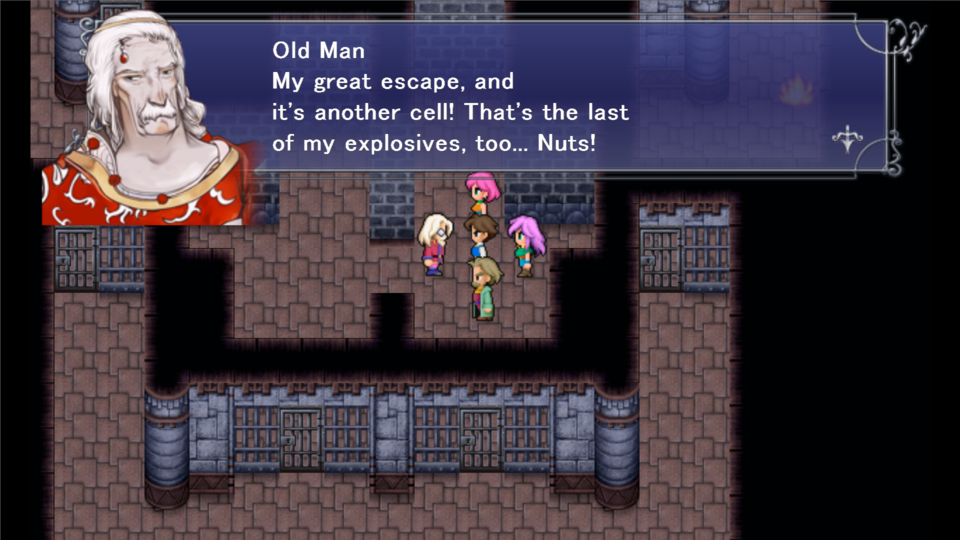
Part 10: Have I Mentioned How This Game FUCKING CLAPS?!
Eventually, Lenna and company make their way to Walse Tower, where the Water Crystal resides. As they navigate the tower, they come across a mammoth-like creature that attacks everyone in the room as if an evil spirit is possessing it. After the beast is defeated, the Water Crystal shatters and bestows them with another set of jobs. These jobs are Red Mage, Time Mage, Summoner, Berserker, and Sorcerer/Mystic Knight. Personally, these were some of my favorite classes, except for the Berserker, as they dynamically play into the game's passive ability system. Also, and we will talk about this point in the next episode, the Summoner class is FUCKING BROKEN! Nonetheless, I do feel compelled to mention how these classes are a definite step-up when it comes to the game's more nuanced mechanics. Classes like the Time Mage and Mystic Knight are far more complicated to wrap your mind around than your initial batch of jobs, and the game isn't as transparent about when these situational jobs should be utilized.
Unfortunately, just as Lenna comes to terms with her latest failure, Walse Tower begins shaking, and Bartz announces the tower is collapsing. As the party attempts to navigate out, Slydra rescues them and uses the last of their life to tow them once again to safety. Next, the foursome decides to investigate the meteor that crashed near Walse. While exploring the interior of the meteorite, which is suspiciously hollow, our company of buffoons stumbles upon a warp panel. This device teleports everyone to a city near the Fire Crystal, but the soldiers there arrest them almost immediately. While in prison, they encounter Professor Cid, who reveals the nearby town of Karnak, and the surrounding world for that matter, quickly industrialized after using his technological inventions to harness the power of the crystals. When he realized the potential consequences of his devices, he attempted to put a stop to their use, but instead, was thrown in prison. Shortly after that, a chancellor releases everyone when he announces one of Cid's contraptions has gone haywire and is risking the destruction of the Fire Crystal.
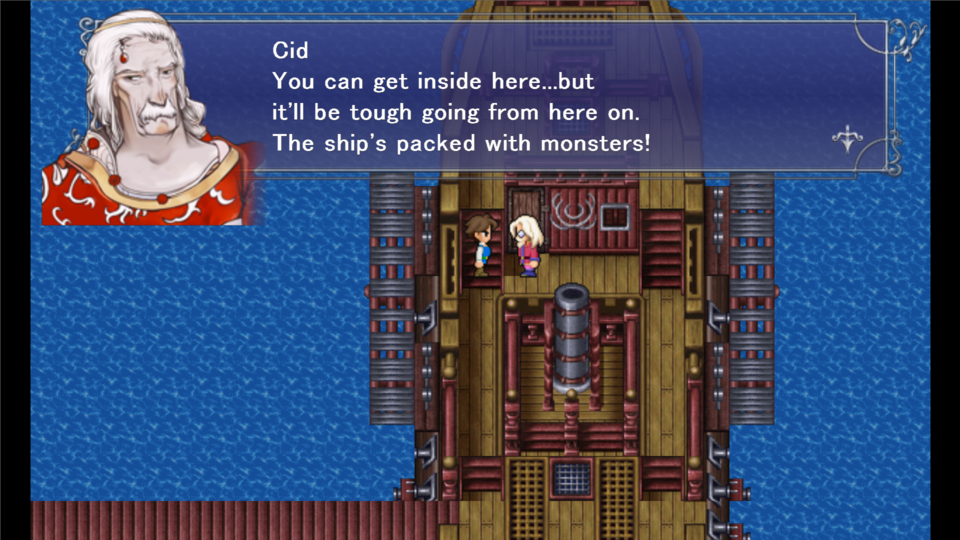
Upon entering an ironclad, you encounter the Queen of Karnak, who, like the mammoth from earlier, appears to be possessed by an evil spirit. She summons an enormous flame monster whom you fight in the form of a boss battle. After defeating this creature, the queen passes out, and the party continues to the crystal chamber at a nearby tower. Upon reaching the top of the castle, they discover another soldier messing around with the machinery surrounding the Fire Crystal. The crystal is promptly overwhelmed and shatters. What ensues next is one of the more distinctive set pieces in the game. As the object explodes, the tower begins to shake, and a timer appears on the screen. While I'm not a massive fan of timed-missions, this one gets a pass for being a tour de force of video game direction and cinematography. Not only do you watch flames slowly consume the surrounding environment, but it also cements an incredibly compelling sense of risk/reward. There are treasure chests with armor and weapons that are helpful to a handful of classes, but because you cannot acquire all of them given the time constraints, you have to decide which jobs reap the most significant rewards.
After examining the ruins of Karnak Castle, you collect the first half of your jobs from the Fire Crystal before setting out to find Cid. This quest eventually sends our explorers to the Library of Ancients, which is another "authored" environment that plays into the game's strengths. While here, you fight possessed books which, depending on the page number they open up to, will spawn one of four possible enemy encounters. Speaking of which, in another example of the designers knowing how to gauge their levels, you pick up a fire-based summon at the library. This command allows the Summoner to have the ability to one-shot virtually everything in the Library of the Ancients. Again, some might call this "busted," but I LOVED having a "get out of Dodge" option at all times.
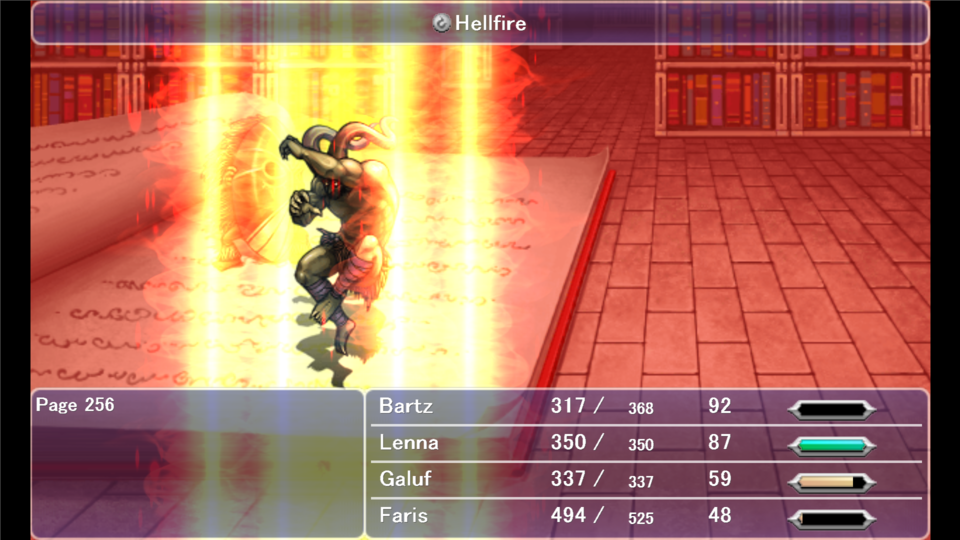
Eventually, we encounter Cid's grandson, Mid, and learn more about the mysterious events surrounding the world. He reveals that long ago, an evil sorcerer named Exdeath was sealed away using the four elemental crystals. Exdeath now seeks to destroy the luminous objects in the hope of once again ruling the world. Knowing one gem is all that remains in preventing Exdeath's release, the newly crowned "Four Warriors of Light" set out to find the Earth Crystal, whose location is not immediately known. Before they can do that, the party must first track down Cid. This task directs them into an encounter with a Black Chocobo who barfs out the remaining jobs from the Fire Crystal, which in total includes the Ninja, Hunter, Geomancer, Beastmaster/Trainer, and Bard classes.
Oh, and in case you were wondering, Tetsuya Nomura did a majority of the enemy designs in this game! I know I have a reputation of giving Nomura a ton of flak in terms of his limited style-set and well-known design shortcomings, but I have nothing negative to say about his work in this game. Surprise! When Nomura has a supervisor and is required to work within a limited thematic, he performs admirably. From top to bottom, Final Fantasy V is an entertaining adventure. Undoubtedly, it fails to innovate and instead prefers to hone the template set forth by its predecessors. Still, there's nothing wrong with a game aiming for a target and hitting that target perfectly. So, it is on that shockingly positive note I wrap up this episode. When we next meet, we are going to talk about THE BEST GODDAMN SONG IN FINAL FUCKING FANTASY HISTORY!
Final note, here's a link to a podcast I recorded in which I talk about Final Fantasy II in more depth with my fellow Giant Bomb users @thatpinguino and @jeffrud!
